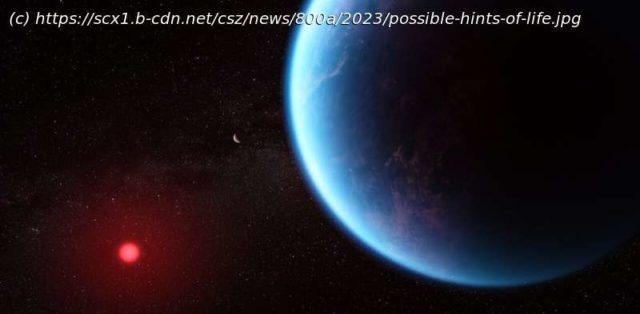Data from the James Webb Space Telescope (JWST) has shown that an exoplanet around a star in the constellation Leo has some of the chemical markers that, on Earth, are associated with living organisms. But these are vague indications. So how likely is it that this exoplanet harbors alien life?
Data from the James Webb Space Telescope (JWST) has shown that an exoplanet around a star in the constellation Leo has some of the chemical markers that, on Earth, are associated with living organisms. But these are vague indications. So how likely is it that this exoplanet harbors alien life?
Exoplanets are worlds that orbit stars other than the sun. The planet in question is named K2-18b. It’s so named because it was the first planet found to orbit the red dwarf star K2-18. There is a K2-18c as well—the second planet to be discovered. The star itself is dimmer and cooler than the sun, meaning that, to get the same level of light as we do on Earth, the planet would need to be much closer to its star than we are.
The system is roughly 124 light years away, which is close in astronomical terms. So what are conditions like on this exoplanet? This is a difficult question to answer. We have telescopes and techniques powerful enough to tell us what the star is like, and how far away the exoplanet is, but we can’t capture direct images of the planet. We can work out a few basics, however.
Working out how much light hits K2-18b is important for assessing the planet’s potential for life. K2-18b orbits closer to its star than Earth does: it’s at roughly 16% of the distance from Earth to the sun. Another measurement we need is the star’s power output: the total amount of energy it radiates per second. K2-18’s power output is 2.3% that of the sun.
Using geometry, we can work out that K2-18b receives about 1.22 kilowatts (kW) in solar power per square meter. This is similar to the 1.36 kW of incoming light we receive on Earth. Although there’s less energy coming from K2-18, it evens out because the planet is closer.






